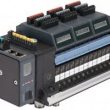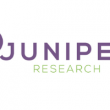

After a spectrum purchase on the Slovenian and Bulgarian market last spring, the Group announces a further purchase of a spectrum worth €14.1 million for the Croatian subsidiary A1 Croatia. The spectrum covers the 700 MHz, 3600 MHz and 26 GHz frequency bands with a validity of 15 years, financed by the Group´s current cash flow. (more…)
August 13, 2021
Posted by: Anasia D'mello

In its second major announcement in two weeks, Inmarsat is unveiling Inmarsat ELERA; a global narrowband network that is ideally suited to the rapidly evolving world of the Internet of Things (IoT) and for global mobility customers, including aviation, maritime, governments and select enterprises. (more…)
Posted by: Anasia D'mello

Unity, the platform for creating and operating real-time 3D (RT3D) content, announced it has entered into a definitive agreement to acquire the high performance remote desktop and streaming technology company, Parsec, which allows gaming and creative professionals to work together from anywhere. (more…)
August 12, 2021
Posted by: Anasia D'mello

Valve island with extended diagnostic functions. Valve island Type 8652 AirLINE from Burkert Fluid Control Systems now offers even greater process reliability thanks to additional diagnostic functions as well as a pressure sensor in the supply line. In the Ethernet variant, the integrated web server facilitates commissioning and maintenance even in demanding applications. (more…)
Posted by: Anasia D'mello

Do we need ‘quick wins’ to build public support for smart cities? Or is it the IoT sector’s job (quietly and invisibly) to provide better, safer, greener lives for today’s smart citizens? Should we be winning hearts and minds with dazzling services, or silently enhancing the quality of life? Jeremy Cowan gets some surprising answers from Francesca Serravalle, Colt’s emerging technologies director, and Magnus Melander, founder of Sweden-based IoT Alliance, SMSE and tech hub THINGS. Plus sport takes over from space programmes as a top tech-driver. And <<SHOCK NEWS>> Bill Gates may have backed a winner in electric-powered aviation!
Posted by: IoT global network

Alkira Inc., has announced a tighter business relationship with Amazon Web Services (AWS) to provide increased agility and advanced networking and security to AWS customers. Alkira is now listed on the AWS Marketplace to provide customers with a simplified procurement experience. (more…)
August 11, 2021
Posted by: Anasia D'mello

Codasip, the supplier of customisable RISC-V embedded processor IP, announced that Mythic, the AI processor company with breakthrough analogue compute-in-memory technology, has selected Codasip’s L30 (originally Bk3) RISC-V-based core for Mythic’s next generation Analogue Matrix Processor (Mythic AMP). (more…)
Posted by: Anasia D'mello

Green Custard Ltd, a UK-based software and Internet of Things (IoT) consultancy, has achieved the status of advanced consulting partner in the Amazon Web Services (AWS) Partner Network (APN). The company specialises in Industry 4.0, connected devices and smart building systems. (more…)
Posted by: Anasia D'mello

A new study from Juniper Research has found that the total number of 5G connections will reach 3.2 billion by 2026; rising from 310 million in 2021. To maximise the monetisation of this significant growth in connections, it predicts that operators will accelerate investment into standalone 5G networks to best position their services to manage future capacity. (more…)
August 10, 2021
Posted by: Anasia D'mello

(Sponsored News) Recently, a partner of Chainway reached a cooperation with the organizer of the 2022 World Cup as an official logistics equipment service provider for the 2022 World Cup. The Chainway C66 handheld computer will provide strong equipment support for logistics transportation and tracking of information during the entire event.
It is reported that the Chainway C66 is going to be used for tracking and management of transport vehicles, drivers, and items. It can significantly improve work efficiency and reduce the error rate of manual operation. It also provides a large amount of data to the managers, which helps in entertain vehicle and material inquiries and grasp the real-time status of material transportation in real-time. The device ensures the efficiency and safety of material transportation during the World Cup and helps the 2022 World Cup in Qatar to proceed smoothly and efficiently.
In the same period, C66 will also be deployed for the automated production management of transportation vehicle factories to improve the information management level and operational efficiency of the production line.
About Chainway C66 handheld computer
The Chainway C66 reader is a well-built handheld terminal integrated with the Impinj E710 chip. Equipped with features like high sensitivity and stability, and remarkable configurations and accessories, it is suitable for adoption across retail, supply chain and logistics, and several other industries.
Posted by: IoT global network